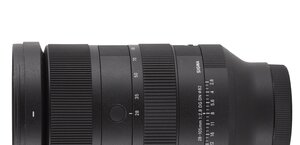Sigma A 50 mm f/1.4 DG DN
7. Coma, astigmatism and bokeh
| Center, f/1.4 | Corner APS-C, f/1.4 | Corner FF, f/1.4 |

|

|

|
| Center, f/2.0 | Corner APS-C, f/2.0 | Corner FF, f/2.0 |

|

|

|
Astigmatism, understood as an average difference between horizontal and vertical MTF50 function values, amounted to 4.1%. It is a very low level, not giving you any reasons to worry. In this category the new Sony model fares slightly better than its predecessor and also slightly weaker than the Sony FE 50 mm f/1.4 GM.
Please Support UsIf you enjoy our reviews and articles, and you want us to continue our work please, support our website by donating through PayPal. The funds are going to be used for paying our editorial team, renting servers, and equipping our testing studio; only that way we will be able to continue providing you interesting content for free. |
- - - - - - - - - - - - - - - - - - - - - - - - - - - - - - - - - - - - - - - - - - - - - - - -
Out-of-focus images seem to be quite nice. Light spread in the circles seems to be even and onion-ring bokeh, despite apherical elements in the system, is just slightly visible but it can be noticed if you look carefully. The new model fares weaker than its predecessor but you have to remember that the new Sigma lens features more aspherical elements so its task was more difficult.
Mechanical vignetting is a noticeable problem, though – it remains visible even on stopping down the aperture by 2 EV. It's a big regress compared to the model designed for reflex cameras – its mechanical vignetting disappeared already by f/2.0. For a change the new Sigma seems to fare a tad better than the smaller Sony model.
| Center, f/1.4 | Corner APS-C, f/1.4 | Corner FF, f/1.4 |

|

|

|
| Center, f/2.0 | Corner APS-C, f/2.0 | Corner FF, f/2.0 |

|

|

|
Center, f/2.8 | Corner APS-C, f/2.8 | Corner FF, f/2.8 |

|

|

|






